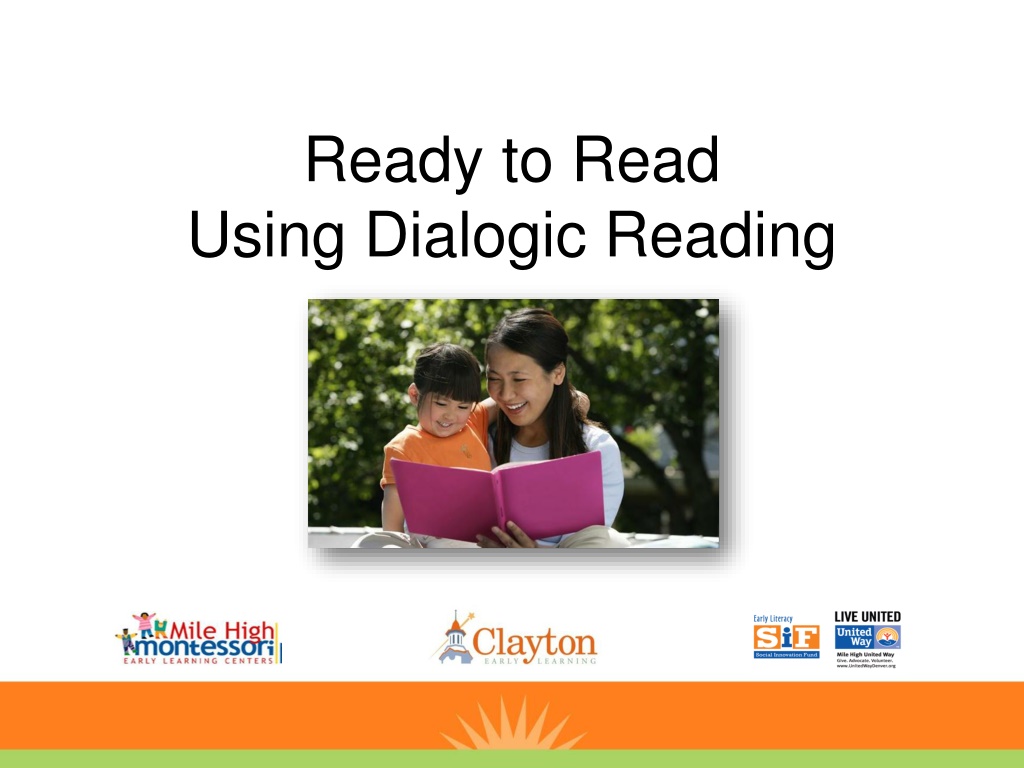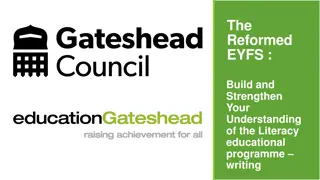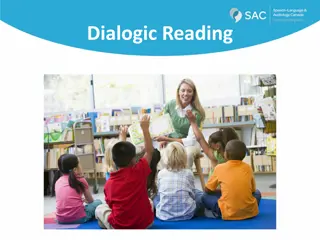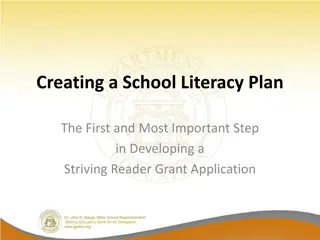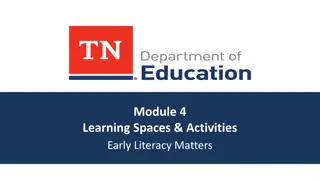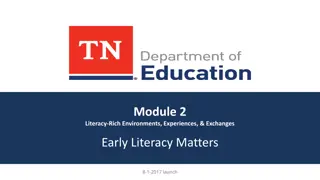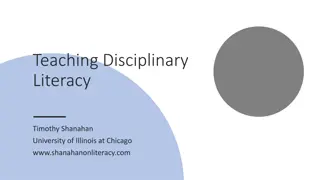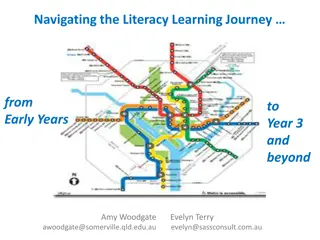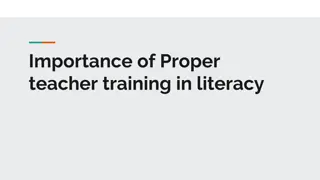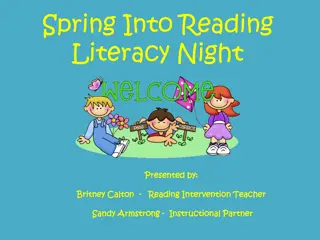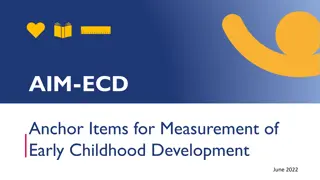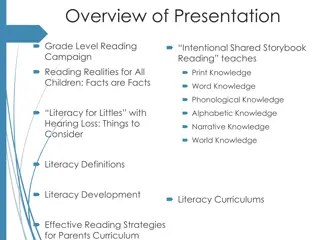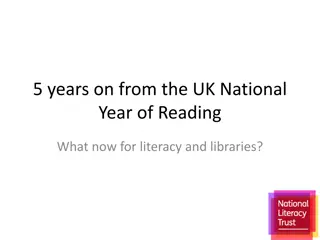Understanding Dialogic Reading for Early Childhood Literacy
Dialogic reading is a valuable tool to engage young children in reading, fostering literacy skills crucial for school readiness. Through interactive conversations about picture books, children become active participants in the reading process, enhancing their vocabulary, comprehension, and love for books. Research shows that dialogic reading significantly boosts language development and prepares children for academic success. This method emphasizes the importance of early language exposure and provides strategies for parents and educators to support children's literacy acquisition effectively.
Download Presentation

Please find below an Image/Link to download the presentation.
The content on the website is provided AS IS for your information and personal use only. It may not be sold, licensed, or shared on other websites without obtaining consent from the author. Download presentation by click this link. If you encounter any issues during the download, it is possible that the publisher has removed the file from their server.
E N D
Presentation Transcript
Ready to Read Using Dialogic Reading
Agenda Welcome Opening Activity What the Research Says What is Dialogic Reading Type of Books to use for Dialogic Reading Practice Wrap-up
Learning Outcomes Participants will be able to: Explain what Dialogic Reading is and why it is important to use with young children Describe the steps in CAR method Identify the characteristics of appropriate books for Dialogic Reading
Reflections on Reading What do you remember about reading as a child? What was your favorite book when you were a child? Why?
How we read with children early in life gives them a gateway to understanding our world and developing a love of books.
What the Research Says Picture book reading provides children with many of the skills that are necessary for school readiness: vocabulary, sound structure, the meaning of print, the structure of stories and language, sustained attention, the pleasure of learning. Grover J. (Russ) Whitehurst, Ph.D., Director, Institute of Education Sciences, U.S. Department of Education.
What the Research Says Children who have been read to dialogically are substantially ahead of children who have been read to traditionally on tests of language development. Grover J. (Russ) Whitehurst, Ph.D., Director, Institute of Education Sciences, U.S. Department of Education.
What is Dialogic Reading? The term dialogic reading means a dialog or conversation about a book. The goal is to make children active participants in shared picture book reading rather than passive listeners to stories being read by adults. It is an intervention to support emergent literacy and literacy acquisition among young children.
The CAR Method Draws upon 3 solid research bases: Early language is critical to later academic success. Parents and teachers can use simple language facilitation strategies after brief training. Strengthening a child s first language- the language spoken at home- will also support the development of English. from Language is the Key by Washington Learning Systems 2006
The CAR Method Asks the adult to Follow the child s lead while they use the following research based strategies to facilitate language. Comment and wait Ask questions and wait Respond by adding a little more from Language is the Key by Washington Learning Systems, 2006
Comment and Wait Describe the picture: There s a dog. He s driving a truck. They are riding bikes. Wait 5 seconds: Allows the child time to say more. Let s the child know the adult is interested in what they have to say. from Language is the Key by Washington Learning Systems, 2006
Ask Questions and Wait Ask questions about: the pictures what is happening in the book what the child is interested in what the child is pointing to Wait 5 seconds This gives the child time to: think about the answer give the answer from Language is the Key by Washington Learning Systems, 2006
Respond by Adding a Little More This keeps the conversation going Helps the child to speak in complete sentences Introduces new vocabulary
A Closer Look View the video Talking with Books While you watch look for: Comment and Wait Ask Questions and Wait Respond by adding a little more One thing about second language learners
Books for Dialogic Reading have clear pictures have a simple story are not too long have pictures of things that are familiar to the child show action and detail in the pictures are interesting to the child From Hear and Say, 1999
Practice With a partner: Pick a book from the table Decide who will facilitate using the CAR strategies and who will respond After 10 minutes pick a new book and switch roles
Summary Follow the child s interest. Don t push the child with more prompts than they can handle. Keep it fun.
